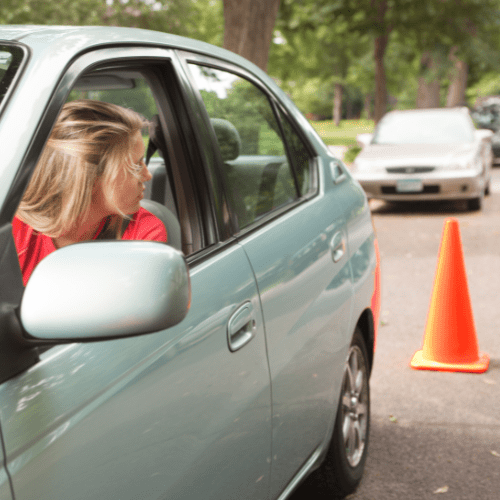Changes to Teen Driving Law in North Carolina | Bice Law
January 8, 2023

The new year is bringing changes to the teen driving law in North Carolina. The new law is effective January 1, 2024. According to the North Carolina Department of Motor Vehicles, beginning January 1, 2024, new drivers in North Carolina will be required to have their Level 1 Limited Learner Permit for 9 months under the Graduated Driver Licensing System (GDL).
During the COVID-19 pandemic, North Carolina legislature temporarily changed the waiting period to 6 months when it had been 12 months for the previous 25 years. The 6 month requirement expired at the end of 2022, and in early 2023 the period was changed back to 12 months. The legislature has now made the 9-month period permanent. Before obtaining the Level 2 Limited Provisional License, teen drivers will also need to be at least 16 years old, log 60 hours of driving time, pass a road test, and show printed proof of insurance in the teen driver’s name.
“The law doesn’t allow for grandfathering anyone in, so if someone has their six months of Level 1 in before the end of the year but doesn’t get in to take their road test by Dec. 29, they will have to wait until they hit nine months to take the road test and get their Level 2. Anyone who got their Level 1 after June 30 must have nine months,” stated DMV Commissioner Wayne Goodwin.
Statistics of Accidents Involving Teen Drivers
According to the National Highway Traffic Safety Administration (NHTSA) in 2020 there were 1,885 young drivers who died in traffic crashes which was a 17% increase from 1,616 in 2019. Motor vehicle traffic crashes are a leading cause of death for 15-20 year olds. Additionally, an estimated 189,950 young drivers were injured in traffic crashes in 2020.
In the most current data from the North Carolina Department of Transportation, there were a total of 49,606 traffic crashes involving teen drivers in North Carolina in 2021 alone. As a result of those crashes, there were a total of 10,901 injuries and 102 deaths recorded. Distracted driving, lane departure, and speeding were recorded as the highest causes of crashes in teen driving.
Common Dangers of Teen Driving

The thrill of obtaining a driver’s license is a rite of passage for teenagers, marking the beginning of newfound independence and freedom. However, it is essential to acknowledge the common dangers of teen driving. From inexperience to risk-taking behaviors, understanding these hazards is crucial for both young drivers and their guardians.
Inexperience and Lack of Skill: Teenagers, lack the experience required to navigate complex traffic scenarios. Unlike seasoned drivers, they may struggle to make split-second decisions, increasing the likelihood of accidents. Encouraging teens to gradually build their driving skills under the guidance of experienced adults can mitigate this risk.
Risky Behaviors and Peer Influence: Adolescence is a time marked by a desire for excitement and risk-taking. Unfortunately, this mindset can extend to the road, leading teens to engage in dangerous behaviors such as speeding, tailgating, and aggressive driving. The influence of peer pressure further exacerbates these risks, making it crucial for parents to address the importance of responsible driving habits.
Distracted Driving: In an era dominated by smartphones and constant connectivity, distracted driving has become a pervasive issue among teens. Texting, taking calls, or using social media while driving diverts attention from the road and increases the likelihood of accidents. Education campaigns and strict rules about phone use behind the wheel are vital in curbing this dangerous trend.
Impaired Driving: Experimentation with alcohol and drugs is unfortunately common among teenagers. When combined with the inexperience of driving, impaired judgment can lead to catastrophic consequences. Parents must emphasize the severe dangers of driving under the influence and foster an environment where teens feel comfortable seeking alternative transportation if needed.
Nighttime Driving Challenges: Teens often face increased challenges when driving at night. Reduced visibility combined with a lack of experience can make nighttime driving more hazardous. Parents should consider implementing curfews and gradually easing teens into nighttime driving scenarios to ensure a safer transition.
Failure to Wear Seat Belts: Seat belts are one of the most effective safety measures in a vehicle, yet teens sometimes neglect to use them. Emphasizing the importance of seat belt usage and setting a strict example can help instill this critical safety habit in young drivers.
After a Teen Driving Accident | Contact Bice Law
After being injured in a teen driving accident, take the first step to protect your legal rights and contact Bice Law. We’re ready to fight for your rights and get you the compensation that you deserve. We serve families across North Carolina. Results are how we measure success. We’ve built a strong reputation both in and out of the courtroom, and we’ll put our experience and expertise to work on your behalf.
Don’t hesitate, there s only a 3-year window to file a lawsuit for your personal injury claim. If you or someone you know has been injured in a teen driving accident in North Carolina or South Carolina, call the experienced car accident lawyer at Bice Law. Our Frontline Injury Team fights for our clients from consultation to settlement, and we don’t get paid unless you do. Call Bice Law today!

